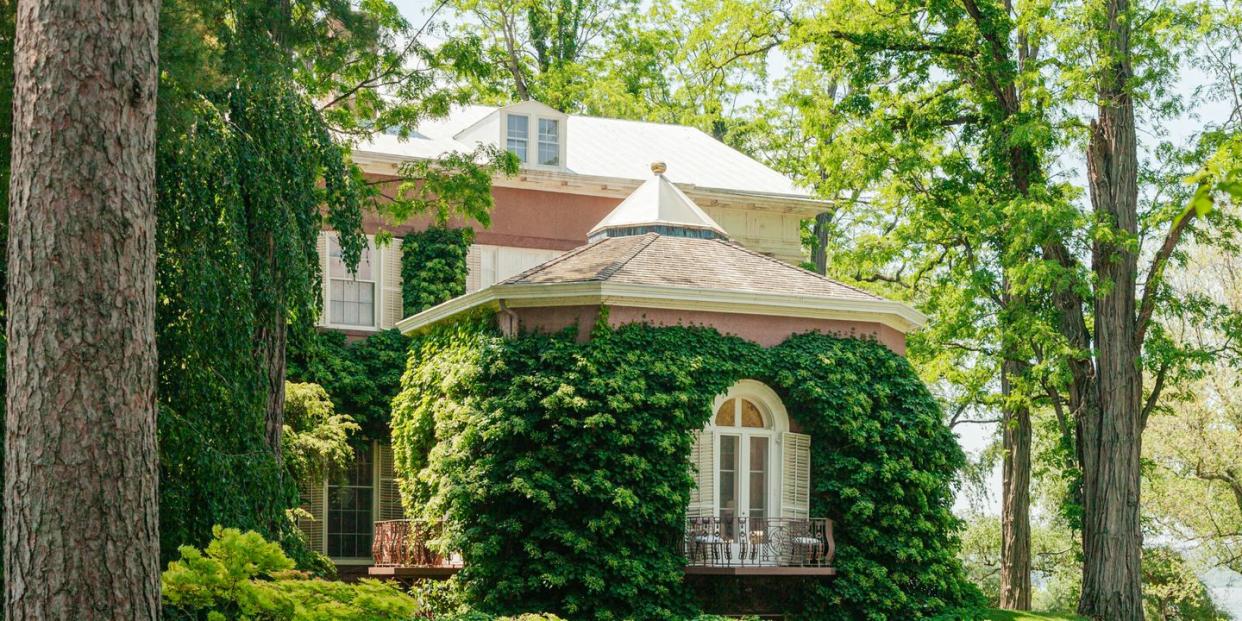Why You Should Consider a Landscape's History in Creating New Outdoor Spaces

- Oops!Something went wrong.Please try again later.
Oftentimes, landscapes—much like houses—are completely altered over time, erasing decades (or even centuries) of history. And while we're all for new ideas, understanding a landscape's history is incredibly important in order to create outdoor spaces that are sustainable and long-lasting—and honor the histories they've hosted. That's why many landscape architects, like Thomas Woltz of Nelson Byrd Woltz Landscape Architects, seek to preserve the legacies of notable gardens and parks. “So often, one generation erases the past of the previous one, making the case for preservation all the more urgent," Woltz tells House Beautiful.
In a lecture presented by the Institute of Classical Architecture & Art in collaboration with the Classical American Homes Preservation Trust, Woltz explores how he reimagines a landscape without making this mistake. The lecture—which is titled “Listening to Land: Cultural Landscape Research in Contemporary Practice with Thomas Woltz”—outlines Woltz's research-based process.
“Our design process begins with asking the land its story and from there we build a body of scholarly content using maps, oral histories, photographs, deeds or wills to reconstruct a timeline of the landscape eras of a given site,” Woltz explains.

Not only does this process inform what will be best for a site from a natural perspective, it often brings up broader findings: Sometimes unassuming plots of land are hiding more complex pasts, Woltz says. "So often the landscapes of American Indigenous People are invisible to the modern eye, and the landscapes of African American culture have often been intentionally obscured or erased," explains the designer. "Our work seeks to find these stories, lift them up and find inspiration for new, resilient landscapes that tell a fuller story of every site. The truth is in the soil, our job is to reveal it with our tools of design." In so doing, Woltz endeavors to honor the legacy of a space, so that it's not reworked into an unrecognizable site.
In the research phase of a project at Georgia Tech unveiled this spring, for example, the designer and his team discovered that the site was once home to the Pickrick Diner, whose segregationist owner famously denied entry to three Black students a day after the passage of the the Civil Rights Act. As a result, Woltz decided to turn the garden into a space of reflection, where three evergreen trees symbolize the resilience of the Black diners.
To Woltz, uncovering and preserving this type of history is especially important in landscape design, where it's common for such reminders to quite literally become overgrown. “Erasure of the inconvenient is so easily done as soil, gardens, forests and landscape artifacts are so vulnerable to weather, age and development,” he explains.
After applying this historically-minded approach to landscape designs for the Jay Heritage Center and the Olana State Historic Site, Woltz is currently working on revitalizing the landscape of the John and Alice Coltrane Home.
Woltz's lecture is part of the ICAA’s Bunny Mellon Curricula and features an introduction by Thomas Lloyd, the grandson of celebrated horticulturist Bunny Mellon, who is best known for designing the White House Rose Garden during the Kennedy administration.
"The Bunny Mellon Curricula was established to foster and promote the aesthetics of my grandmother's landscape design into the architectural classroom discussion,” Lloyd tells House Beautiful. “Thomas Woltz's vastly innovative and ecological approach aligns wonderfully with this mission."
Interested in watching the entire lecture? You can do so through the ICAA’s website here.
Follow House Beautiful on Instagram.
You Might Also Like

